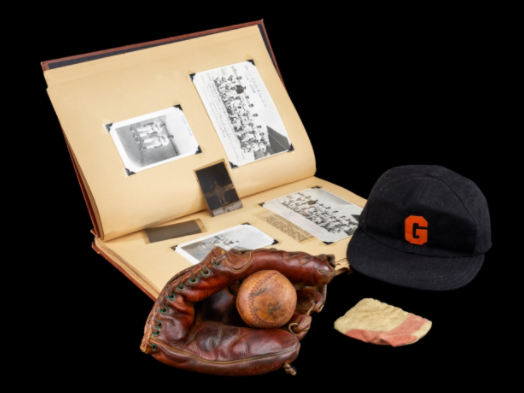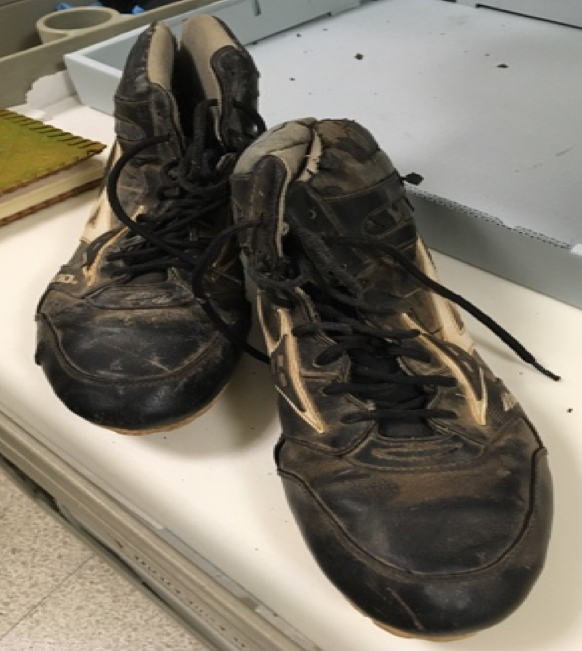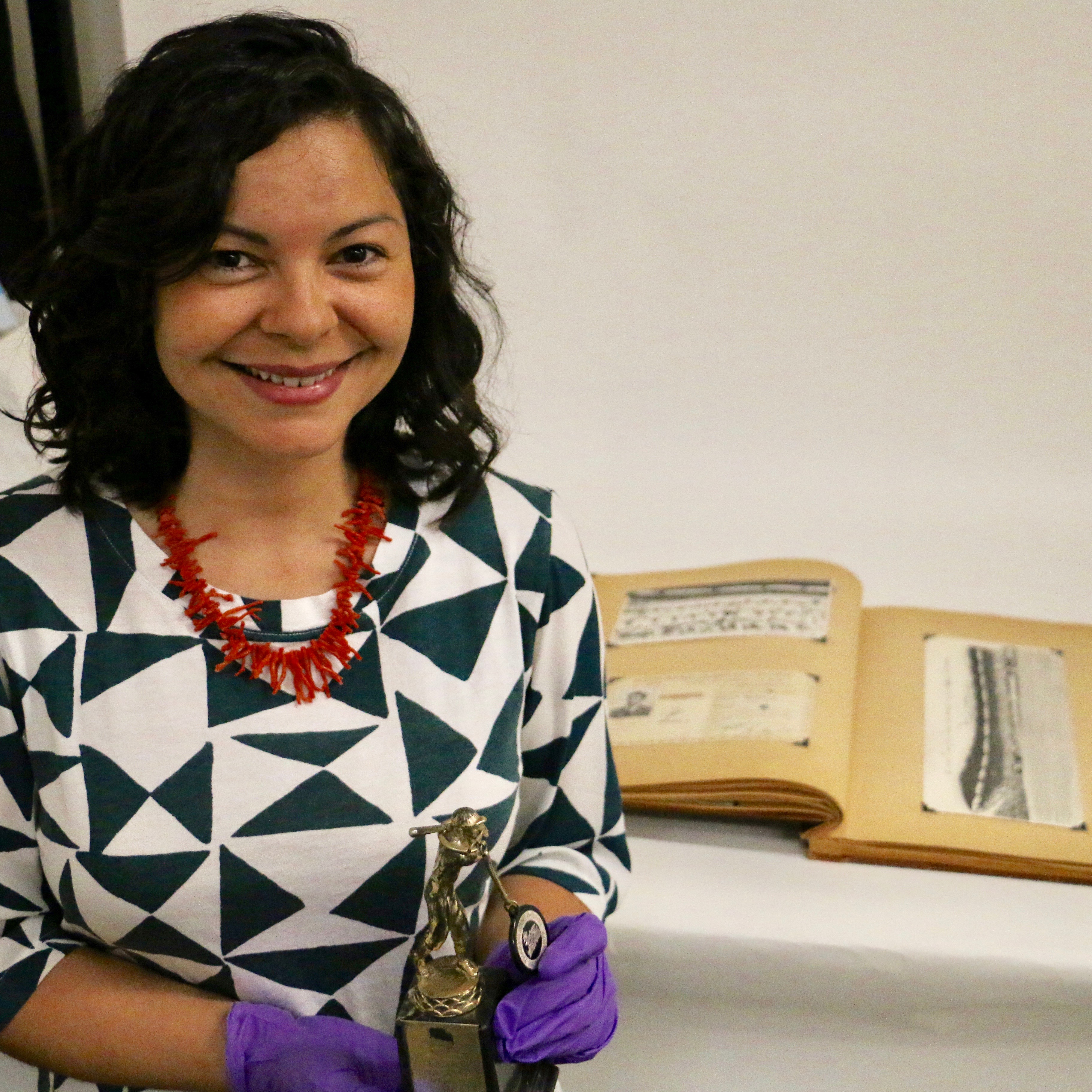Every community has a story that connects them to the world of sports. This is the very premise that drives some of the work coming out of the Smithsonian’s National Museum of American History. Curators at the D.C. museum are currently working on an exciting community-collecting initiative called Latinos and Baseball: In the Barrios and the Big Leagues, scheduled to open in the spring of 2020.
The Smithsonian Institution has a long history that dates back to 1846, honoring a mission to increase and diffuse new knowledge. Yet, a major problem today is the compartmentalization of American history. This means that all too often, the stories of underrepresented communities are rendered invisible within the national narrative.
To make the stories of Latinos visible, curators at the museum are spearheading the Latinos and Baseball initiative, which aims to creatively use the sport of baseball as a lens to unveil the multiple experiences of Latino peoples in the US. This is important and is in alignment with the museum’s overall mission because it allows people to learn about how Latino communities across the nation have historically used the sport of baseball to celebrate their identities and stake claims of belonging in this country while also navigating the forces of racism, segregation, and discrimination.
In order to realize the promise of this work, the National Museum of American History is strategically collaborating with the Smithsonian’s Latino Centerl, which helps promote a Latino presence within the Smithsonian by working in partnership with all the museums and research centers to ensure that the contributions of Latinos are represented. Eduardo Díaz, the center’s director, feels this is an important exhibit because it “is very consistent with the notion that Latino stories are part of the greater American narrative.”
The mastermind behind the Latinos and Baseball initiative is Dr. Margaret Salazar-Porzio. Dr. Salazar-Porzio is a curator in the museum’s Division of Home and Community Life and specializes in 20th century visual and material culture in the Southwest United States and US-Mexico borderlands.
Dr. Salazar-Porzio first came up with the idea for the exhibit four years ago, when she started working with the Smithsonian. Growing up, she attended her brothers’ baseball games and had enriching experiences by interacting with diverse groups of people in the crowd. By attending their games, she learned that “baseball has been such an important part of Latino communities and identity formation.” With that realization, Dr. Salazar-Porzio aims to share the everyday stories and nuances of Latino communities through the sport of baseball.
With limited opportunities, baseball players of color created their own spaces to play baseball.
What does it mean when people say baseball is America’s pastime? In Playing America’s Game: Baseball, Latinos, and the Color Line, Adrian Burgos explains how many Americans believed in the 1880s that baseball served as a tool of assimilation for the nation’s recently arrived immigrants. For white European immigrants, assimilation to whiteness and integration into baseball was possible, while black and Latino players did not have the same opportunities.
With limited opportunities, baseball players of color created their own spaces to play baseball, forged a sense of belonging, and engaged in community development. Burgos points out that during the turn of the 20th century in Jim Crow America, African-American players were recruited by Latin American baseball entrepreneurs in Cuba, Mexico, Puerto Rico, and other Spanish-speaking regions of the Americas. Additionally, Burgos shows that professional teams and leagues of black baseball offered a more welcoming experience to Latinos than white baseball establishments.
What is powerful about the Latinos and Baseball initiative is that it aims to go beyond the glamor of baseball, and instead deal with issues that surround the game even today. Díaz is particularly excited about this, because he feels the exhibit will show how Latinos have used baseball to “deal with civil rights, worker compensation, out right racism, and things that unfortunately also form part of America’s history.”
To tell more complete stories, Latinos and Baseball initiated their project by hosting a panel of scholars in DC, followed by a series of community events in different parts of the United States. Since their kick-off event, Dr. Salazar-Porzio and her team of collaborators, which includes program coordinator Lola Ramirez, have traveled to California, Kansas, New York, Colorado, Florida, Massachusetts, and Ohio to personally meet with object donors and collect their oral histories to represent both the objects and the people’s stories in a holistic way.
Dr. Salazar-Porzio and her team share multifaceted stories about the role baseball has played in forging community for Latinos. They are able to do this through collecting and preserving material culture and artifacts like baseballs, hats, gloves, scrapbooks, photos, and newspaper clippings. The example below is from Leopoldo Martinez whose story is not only about baseball but also belonging, family, and struggle.

Martinez was a semi-professional ball player who played for the Mexican national team and clubs in Texas and Los Angeles between the years of 1930 and 1950; he also played for his company team at the Southern Railroad. A self-taught switch hitter who also threw with both arms, Martinez went on to teach his four boys, Eddie, Ernie, Howard, and Randall how to play baseball.
Although Jackie Robinson broke the color line in 1947, Burgos has shown that about 50 Latino players had first entered the major leagues because they were able to racially pass as Spanish. This wasn’t the case for players like Martinez. His son Ernie for example, has shared that when his father played, he faced a great deal of criticism as well as racism because he was of Mexican descent. It is through artifacts like a scrapbook, a ball, glove, and a hat that Martinez’s stories of pride and hardship will come to life.
For Martinez, baseball served as a vehicle for belonging and contributing to this country, as well as a force that subjected him to the harsh realities of exclusion and prejudice because he was racially profiled as a non-white Mexican. By showcasing his artifacts, the National Museum of American History re-centers his story as an American one, allowing people to learn about the past and think critically about the future.
Another artifact in the collection is Chris Gonzalez’s donated pair of Mizuno baseball cleats that he wore from the 1970s to the early 2000s. Gonzalez played for various teams in Kansas, which included the Eagles and Aztecas.

Gonzalez used the cleats to play what is known as fast-pitch softball, which boomed in the post-World War II era. It was a popular sport among war veterans, and it gave rise to teams that emerged from American industries like the Santa Fe Railroads, meat packinghouses, agricultural fields, and breweries, to name a few. According to José Alamillo, Mexican-Americans have historically used baseball to build solidarity as well as a space to voice their grievances and argues that they helped lay the groundwork for civil rights struggles.
It was in the mid-1970s when Gonzalez first acquired a pair of size 10.5 Mizuno baseball cleats from a friend who had ties to the equipment manager of the Kansas City Royals. What stands out about the cleats is that in all actuality, Gonzalez was a size 12.5. Gonzalez, an industrious player who was and continues to be passionate about the sport, squeezed into shoes that were two sizes too small for him for more than 20 years.

When asked how he was able to play in cleats that did not fit him, he laughed and said “I don’t know, I don’t know, they fit me when I was wearing them, so I kept wearing them… At the end of the games and everything, I would have somebody step on [the] top of my feet to kind of like flatten them out a little bit.” Gonzalez’s story isn’t just about baseball cleats; it’s about resiliency, hard work, and making-do with the resources one has available to them, things that were needed by the Latinos of the era in order to be able to pursue their passions.
In Gonzalez’s present work, this also rings true. Currently, he volunteers to help raise funds for the upkeep cost of a baseball field in Argentine, Kansas. Recreational facilities, like baseball fields, should be supported and maintained by local government efforts, yet, in this case, Gonzalez and other community members have taken it upon themselves to take action and preserve the park so that kids from the neighborhood can practice baseball in it.
Mexican-Americans have historically used baseball to build solidarity.
It is these kinds of stories that Dr. Salazar-Porzio is excited to share with the world because they form part of a national American tapestry. “By preserving these stories and by presenting them on the National Mall we show that what’s important too – alongside Abraham Lincoln’s hat, for example – are these stories that were never included before, so it is really important to me that we are now able to include them in the national narrative.”
Through artifacts and the Latinos and Baseball initiative, story tellers like Chris Gonzalez and Leopoldo Martinez are validated for their experiences. Furthermore, the exhibit presents stories like theirs from an acculturation standpoint rather than an assimilationist one. This is important because their stories as Latinos remain central and are situated within American history, avoiding the pitfalls of erasure that a melting pot approach would yield.
As a matter of representation, the Latinos and Baseball initiative and upcoming exhibit are important now more than ever because they present an opportunity to shed light on the fact that professional and non-professional Latino baseball players have contributed to the growth of this nation both on and off the playing fields. The exhibit should help shine a light on the untold American stories that can teach us about the past and inform our current struggles towards a more socially just future.







